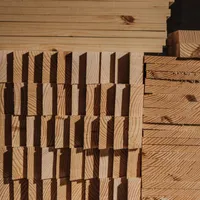Trade Terms & Acronyms
Straightforward Explanations for Common Building Terms

Navigating the world of building materials and construction can sometimes feel like learning a new language, especially with all the specific terms and acronyms used in the trade. At Shawfield Timber, we believe everyone should feel confident in understanding the products and processes involved in their projects.
This guide provides clear explanations of common terms you'll encounter, particularly when working with timber and other building materials here in Scotland. We've broken it down by category to make it easy to find what you're looking for.

Timber & Wood Products
- Batten: A strip of wood, often thinner than a joist, used for various applications such as securing roof tiles, creating a framework for plasterboard, or counter-battening for cladding.
- Carcase (or Carcass): The fundamental structural framework of a piece of furniture (like a kitchen unit) or a building element, before the addition of doors, drawers, or external finishes.
- Carcassing Timber: General-purpose timber used for the structural framework within buildings, such as floor joists, roof timbers, and wall studs. It's typically rough-sawn and may be treated for enhanced durability.
- CLS (Canadian Lumber Standard): A type of kiln-dried, planed-all-round timber with eased (rounded) edges. It's commonly used for internal stud work and framing due to its consistent dimensions and ease of handling.
- DPC (Damp Proof Course): A horizontal barrier of impervious material (often a plastic membrane or slate) built into a wall to prevent moisture from rising by capillary action from the ground. It's crucial for preventing dampness in structures.
- Feather-edge: Timber cladding boards that are tapered across their width, designed to overlap to create a weatherproof external finish, commonly seen on sheds and fences.
- Joist: A horizontal structural timber beam that supports floors or ceilings, transferring loads to walls or other supporting elements.
- Kiln-Dried: Timber that has been dried in a controlled environment (a kiln) to significantly reduce its moisture content. This process enhances stability and reduces the likelihood of warping or shrinkage after installation.
- Larch: A durable and naturally resistant softwood, frequently used for external cladding, fencing, and decking due to its longevity and appealing appearance.

Timber & Wood Products Cont.
- MDF (Medium Density Fibreboard): An engineered wood product made from wood fibres, resin, and wax. Its high density and uniform composition make it ideal for painting and machining, commonly used for furniture, skirting, and architraves.
- OSB (Oriented Strand Board): An engineered wood panel manufactured from layers of wood strands compressed with adhesives. It's a strong, cost-effective alternative to plywood, often used for sheathing, flooring, and roofing applications.
- Rough Sawn: Timber that has been cut from a log but not further planed or smoothed. It has a coarse, unfinished surface and is typically used for structural purposes or where a finished appearance is not required.
- Sarking: Timber boards or rigid insulation boards laid over roof rafters to provide a continuous surface for roofing felt or tiles. In Scotland, traditional sarking often refers to solid timber boards.
- Stud Work: The internal timber framework of a wall, forming the structure to which plasterboard or other wall coverings are attached.
- T&G (Tongue and Groove): A method of joining timber boards where one edge features a projecting "tongue" that slots into a corresponding "groove" on the adjacent board. This creates a strong, interlocking joint, widely used for flooring, panelling, and shed construction.
- Treated Timber (or Pressure Treated): Timber that has undergone a chemical treatment process to protect it from rot, fungal decay, and insect infestation. This is essential for timber used in outdoor or damp environments.
- Waney Edge: Timber that has one or more edges left in their natural, untrimmed state, often retaining the curve of the original tree trunk. It's frequently used for a rustic or natural aesthetic.

General Building
- Aggregate: A broad term for granular materials such as sand, gravel, and crushed stone, used in concrete, mortar, and as a base for paving.
- Architrave: Decorative mouldings fitted around doorframes and window frames, providing a finished trim where the frame meets the wall.
- Jumbo Bags (or Big Bags): When referring to aggregates, "bags" often denotes large bulk bags (also known as "jumbo bags" or "tonne bags") which typically hold between 800-1000kg of material.
- FFL (Finished Floor Level): The final, completed height of a floor, after all flooring materials (e.g., screed, insulation, timber, tiles) have been laid.
- GRP (Glass Reinforced Plastic): Also known as fibreglass, this is a strong and lightweight composite material often used for roofing, mouldings, and bespoke structural elements due to its durability and flexibility.
- Screed: A thin layer of cement and sand mortar applied over a concrete slab to provide a smooth, level surface, typically as a base for final flooring.
Need help with a project?
Reach out to our friendly experts: email us at sales@shawfieldtimber.co.uk or phone us on 0141 613 2333